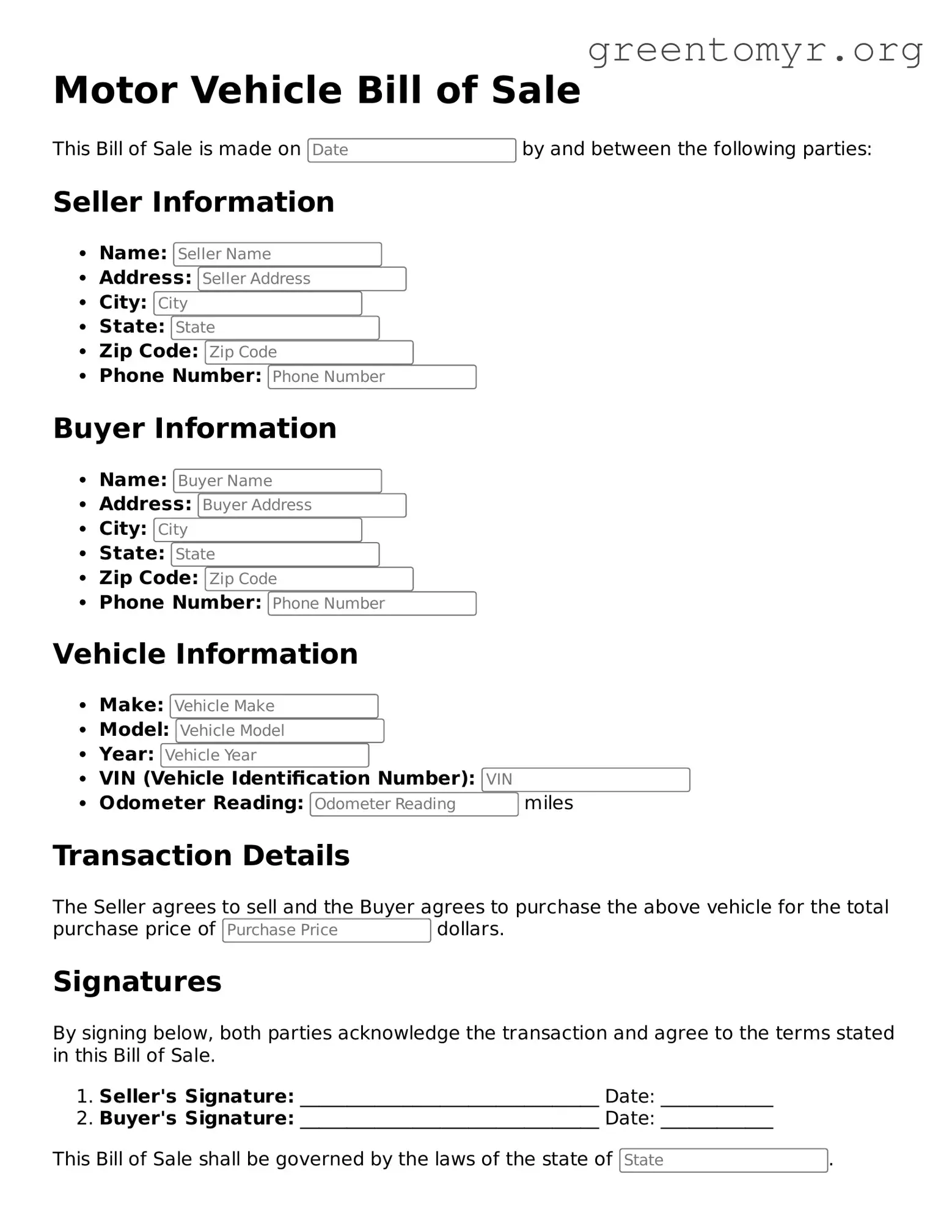Filling out a Motor Vehicle Bill of Sale form can seem straightforward, but mistakes can easily occur. One common error is not providing complete information about the vehicle. It is essential to include the make, model, year, and VIN (Vehicle Identification Number). Omitting any of these details can lead to confusion or even legal issues later on.
Another mistake people make is failing to accurately document the sale price. Listing an incorrect sale price may raise questions during registration or tax assessments. Similarly, forgetting to indicate the sale date can cause complications. It is important for both the buyer and seller to have a clear record of when the transaction occurred.
Many individuals overlook the need for signatures. Both the seller and the buyer must sign the form for it to be considered valid. If either party neglects to sign, it may not hold up in court or during the vehicle transfer process.
Providing incomplete contact information is also a frequent issue. Buyers and sellers should include their full names, addresses, and phone numbers. Missing or inaccurate contact details can lead to difficulties in communication and future transactions.
Failing to contextually state whether the vehicle is sold "as-is" is another oversight. If the seller intends to sell the vehicle without any warranties, this should be clearly specified on the form. Doing so protects both parties from potential disputes regarding vehicle condition.
Some individuals incorrectly assume that a Bill of Sale is not necessary when transferring a vehicle between family members or friends. However, even in casual transactions, documenting the sale provides legal protection and helps avoid misunderstandings in the future.
People also sometimes forget to check for any outstanding liens or loans on the vehicle. Not addressing these issues before the sale can lead to complications for the new owner. Ensuring that the title is clean is crucial for a smooth transfer.
Another mistake occurs when individuals neglect to keep copies of the completed form. It is important for both the buyer and seller to retain a copy for their records. This documentation serves as proof of the transaction and can be beneficial for future reference or disputes.
Lastly, some buyers and sellers do not get the form notarized. Depending on local laws, notarization may be required to validate the sale. Ensuring that the document is certified can add an extra layer of security for both parties involved.
In summary, avoiding these common mistakes when filling out the Motor Vehicle Bill of Sale form can help ensure a smooth and legally sound transaction. Taking the time to double-check all details, including signatures and contact information, can save significant trouble down the road.
